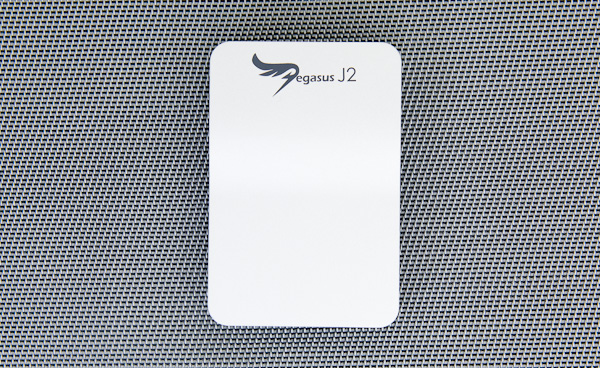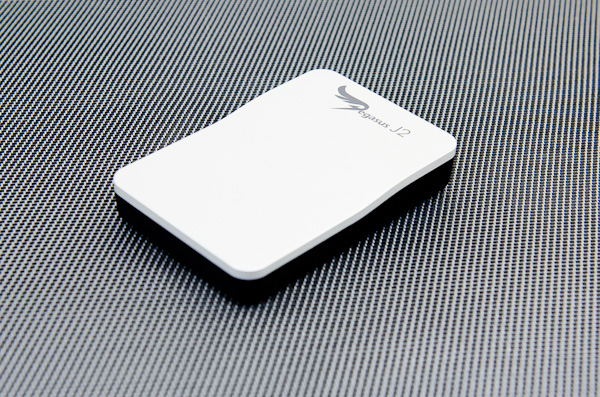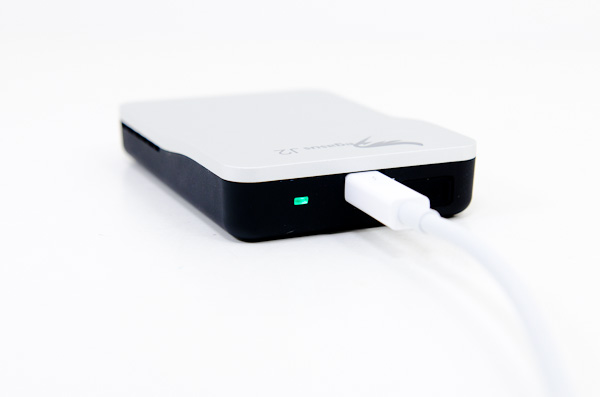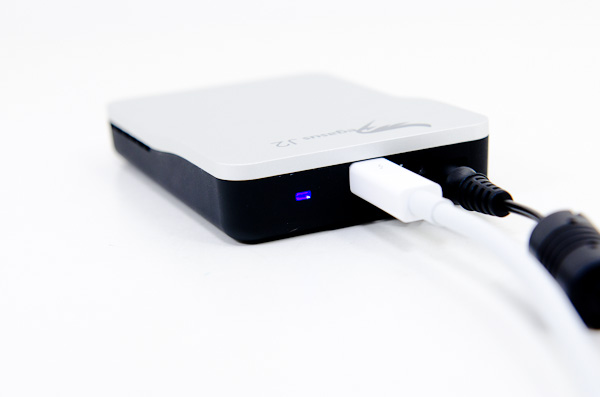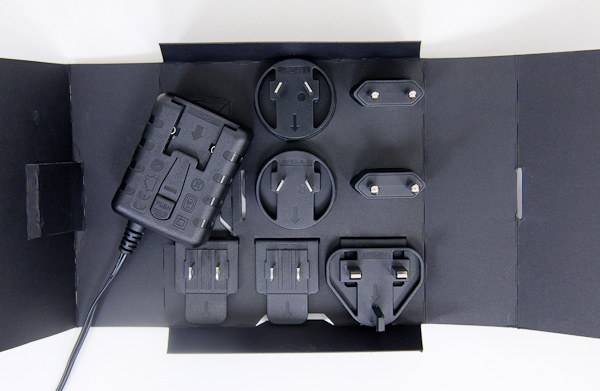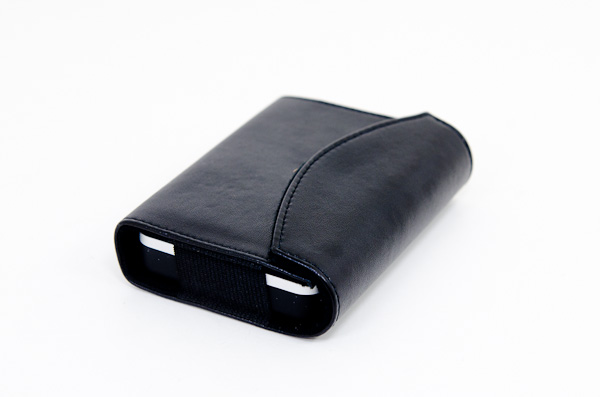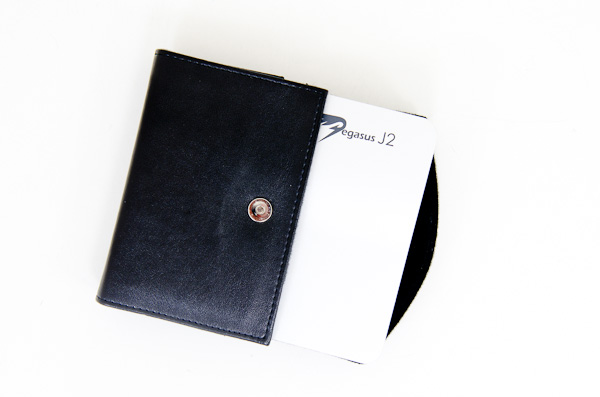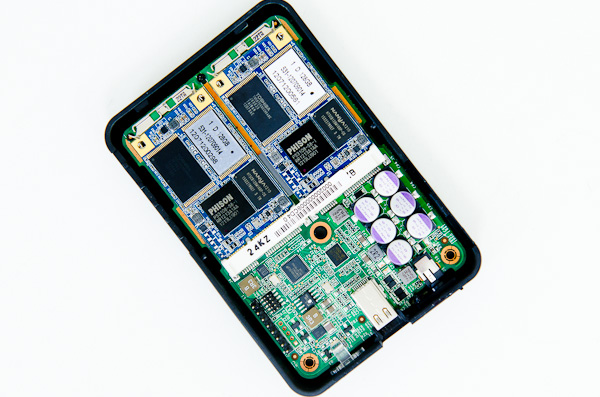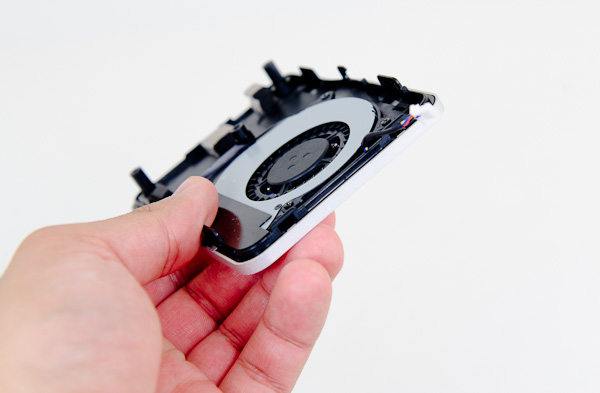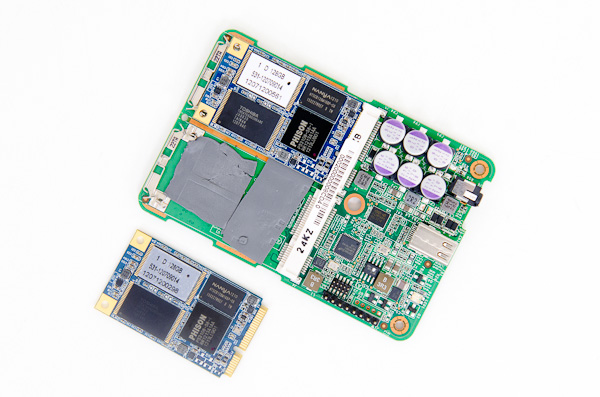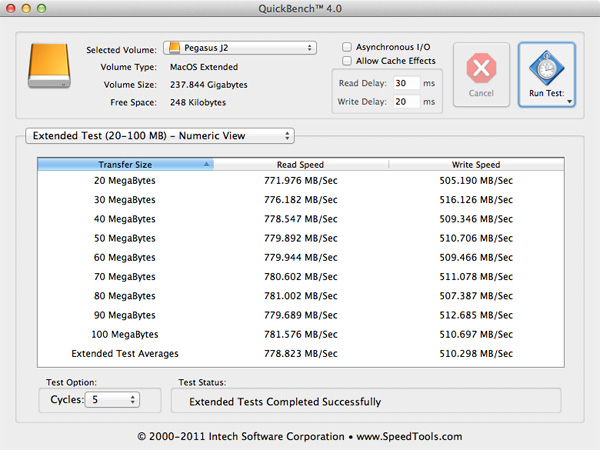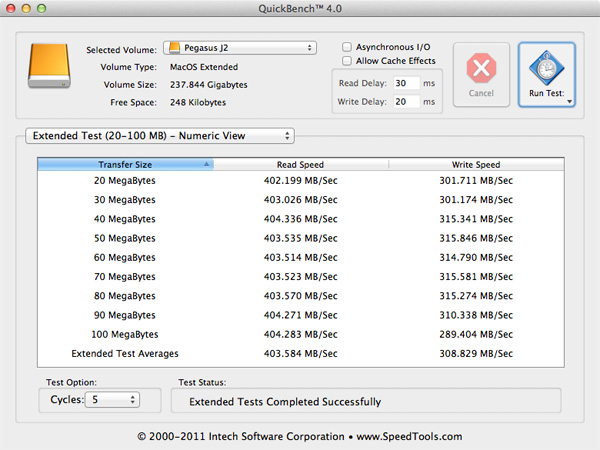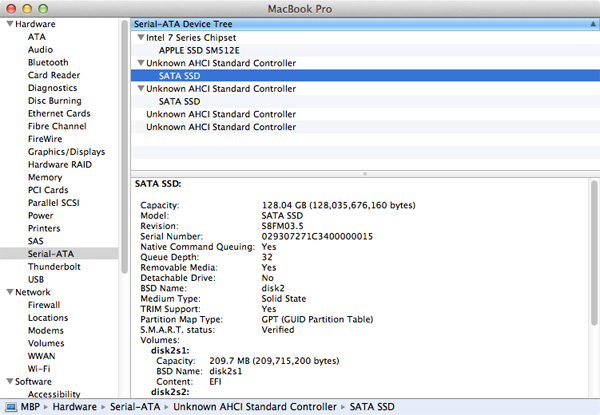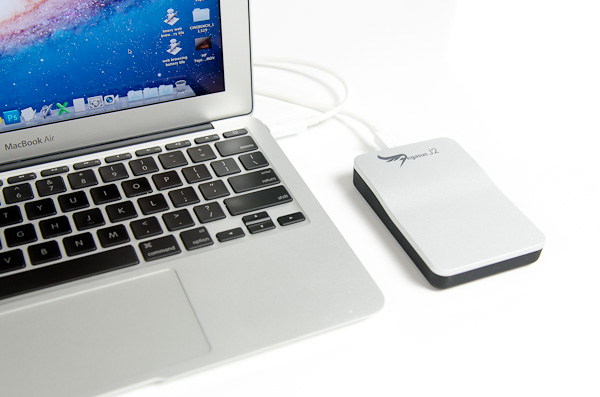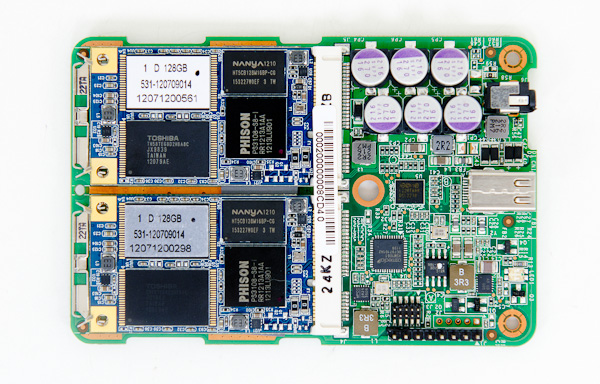
Original Link: https://www.anandtech.com/show/6225/promise-pegasus-j2-review-the-smallest-high-performance-thunderbolt-drive
Promise Pegasus J2 Review: The Smallest High Performance Thunderbolt Drive
by Anand Lal Shimpi on September 2, 2012 1:00 PM ESTPromise was the first to get us a Thunderbolt chassis with the Pegasus R4/R6. Not only was the Pegasus the first shipping Thunderbolt storage chassis, but it continues to be among the fastest on the market. If you've never seen one, the Pegasus R4/R6 is a 4 or 6 bay 3.5" external storage array with built in RAID and Thunderbolt controllers. Promise doesn't ship a chassis without drives, so you get to choose from between 4TB in the lightest configuration (4 x 1TB drives) at $1050 all the way up to 18TB (6 x 3TB) in the beefiest $3000 config. Sequential IO performance is great, generally hitting around 700MB/s for a 6-drive RAID-5 array. There's room for improvement, but running several drives in RAID-0 is typically not the best idea for redundancy.
The biggest issue with the Pegasus (other than cost) is that it doesn't ship with solid state drives. Although the use of 3.5" mechanical hard drives results in good sequential performance and great capacity, random IO performance suffers. After all, even a single SSD tends to have an order of magnitude better random IO performance than a hard drive. For most Thunderbolt use cases (e.g. tossing video/audio/photo work), the Pegasus' array of hard drives is fine. The world is clearly moving towards solid state storage however, and with LaCie offering an SSD version of its Little Big Disk series of Thunderbolt drives Promise had to respond.
The result is this, the Pegasus J2:
The design is extremely unique. While most Thunderbolt enclosures thus far have been home to either 2.5" or 3.5" drives, the Pegasus J2 houses two 6Gbps mSATA SSDs in RAID. I've already demonstrated the sort of performance you can get from RAIDing together two relatively cheap 6Gbps SSDs, and the current crop of mSATA drives can actually equal the performance of their larger 2.5" brethren, so the J2 design makes a lot of sense. The real killer is this: the Pegasus J2 can deliver performance similar to the Pegasus R6, and in many cases it'll outperform it. Here's a shot of the J2 on top of my personal R6 on my desk:
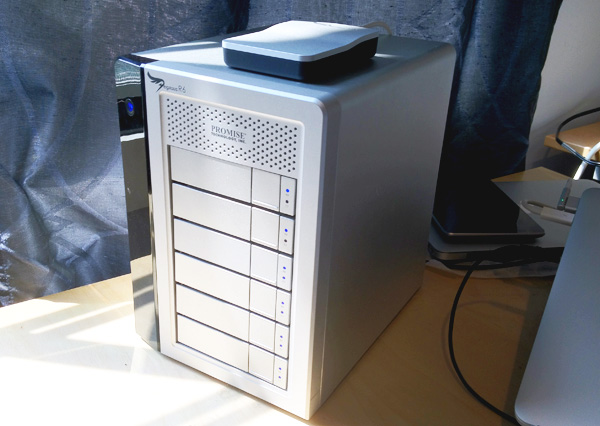
That's the beauty of solid state storage. That little box on top can outperform the big thing beneath it.
Capacity is a problem of course. Promise is only offering the Pegasus J2 in 256GB and 512GB capacities, while you can up to 35x that storage in a maxed out Pegasus R6. I'm less interested in the J2 from a practical standpoint for now, and more intrigued by the form factor and what it could mean for future external Thunderbolt storage. We have the technology now to hit 1TB inside the J2 chassis, and next year that number will grow to 2TB with the move to IMFT's 128Gbit 20nm NAND. The capacity problem goes away over time, but for now it's a definite concern.
Promise also isn't releasing any pricing information today, but rest assured that the Pegasus J2 will be expensive. In our My Book VelociRaptor Duo article I included a chart of the cost-per-GB of many currently available Thunderbolt enclosures:
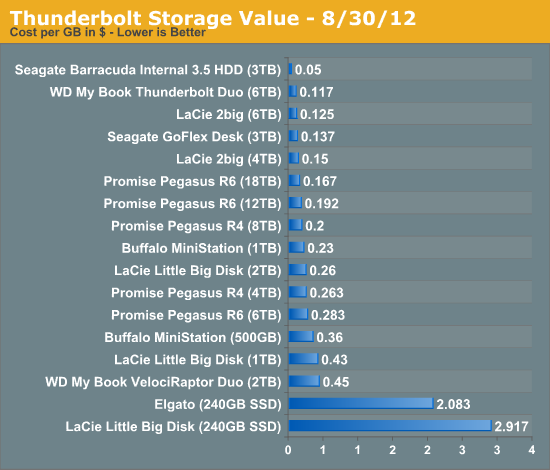
LaCie uses Intel SSDs in its Little Big Disk at $2.917 per GB. It's possible that Promise can do better, we'll have to wait and see closer to official availability if it can however.
The Drive & Bundle
The J2 is subtly styled. Rather than being a rectangle there's a slight wedge taper in the middle of the profile. It sort of looks like my attempts to draw a sportscar in middle school, but better. Build quality and feel are top top notch, better than the Pegasus R-series for sure. The chassis has a solid but not heavy feel to it thanks to material choices. The top cover is a thick piece of aluminum, while the bottom of the chassis is finished in a soft touch plastic. Around back there's a single Thunderbolt port and an optional DC input. The J2 can be operated using bus power or pull from a supplied power adapter. You can switch modes on the fly, you simply get more performance when plugged into the wall. Remember the Thunderbolt spec only allows around 10W to be supplied over the cable itself. Take into account two 6Gbps SSDs (each of which likely draws between 3 - 5W under load), the internal SATA controller, and the power consumption of the Thunderbolt controller + active cable and you're easily beyond 10W. Promise has its own custom SSD and ASMedia SATA controller firmware that allows it to throttle performance when running on Thunderbolt bus power to keep below that 10W maximum. There's no reconfiguring or software changes needed when you switch between operating modes, just plug in the drive's external power and you get better performance. The bulk of the J2's power still comes from the Thunderbolt bus. With the external power adapter plugged in the J2 draws at most 1.1W from it at idle, and up to 2.9W under load - the rest comes over the Thunderbolt cable. A single LED indicator on the back of the drive lets you know what mode you're running in. Green for bus powered (low performance) and blue for external power (high performance):
The J2's optional power brick comes with a set of removable plugs for international use:
The Pegasus J2's bundle also comes with a carrying case. There's no Thunderbolt cable included unfortunately.
The chassis is super easy to get inside, there are three phillips head screws that keep the two pieces together. Two are beneath rubber feet, while the third is in the middle of the base of the chassis. Once removed you can slide the aluminum cover forward and pry the two pieces apart:
There's a small, notebook fan inside the aluminum cover to the J2 (if you are taking one of these things apart be careful when opening the J2 as the fan gets power from the underside of the PCB). The fan never gets too loud but it helps keep the tiny SSDs cool.
The PCB itself is a pretty neat looking design. There are two mSATA SSDs placed side by side:
Thermal pads cover the bottom half of the drives, the top half is cooled by the J2's fan. The drives use Phison's PS3108 6Gbps SATA SSD controller, typically used in entry level, value SSDs. Sequential performance is good, but random write speed isn't and in a heavily fragmented state performance can drop significantly. I suspect Promise chose the Phison solution because of the low cost, low power profile and the ability to modify firmware. The only problem is I'm not sure if I'd be too comfortable paying for a premium product using distinctly value SSD controllers.
SATA duties are handled by ASMedia's ASM1061 PCIe 2.0 x1 to 6Gbps SATA controller. Like most Thunderbolt enclosures that rely on a RAID array of drives, the Pegasus J2 uses software to handle all striping/mirroring duties. In the case of the J2 under OS X, you'll be using Apple's Disk Utility to switch between RAID-0 and RAID-1.
Thunderbolt support is provided by an Intel Port Ridge controller (the tiny IC labeled L2201). Port Ridge is a Thunderbolt end point controller, meaning it only has a single Thunderbolt input and can't pass PCIe/DP to any other devices down the chain - it terminates the Thunderbolt chain. Port Ridge is lower cost Thunderbolt controller often used for these types of tiny, bus powered devices. Since you can only have one bus powered device per Thunderbolt chain, it makes sense to use a controller that can only operate as an end point.
Performance
I feel like the most common usage model for any Thunderbolt storage device is for accessing large files that would benefit from high speed sequential IO (e.g. movies, photos, music). For those use cases, even the big hard drive based Thunderbolt enclosures perform fine if you just throw enough drives at the problem. While mechanical storage can hardly deal with heavy random IO, sequential speeds are still acceptable - especially in a multi-drive RAID setup. With 6Gbps SSDs however, it only takes a couple to deliver outstanding sequential IO performance. Despite the Pegasus J2's diminutive size, it delivers sequential IO performance that rivals the Pegasus R6:
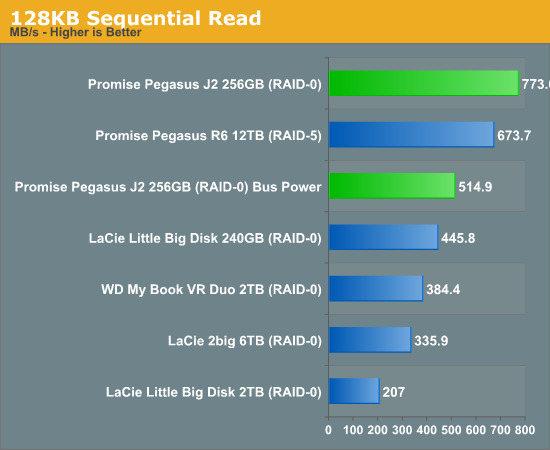
Sequential read speed is a strong suit of the J2. When running on external power the J2 is even faster than the 12TB R6 at nearly 800MB/s. Even on bus power the J2 is among the fastest Thunderbolt enclosures we've ever tested, and you can fit it in your pocket.
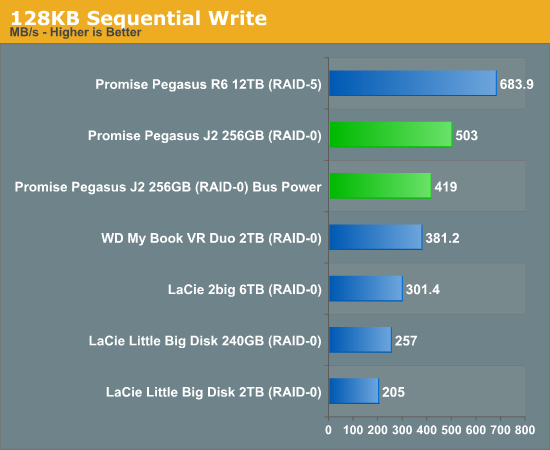
Write performance isn't as solid, which is unfortunately due to the Phison controllers. The J2 is still fast here but the R6 is faster, and some of the hard drive based solutions get close when running on bus power alone.
QuickBench echoes what Iometer tells us about sequential IO performance on the Pegasus J2:
We see the same drop when we go to bus power on the J2:
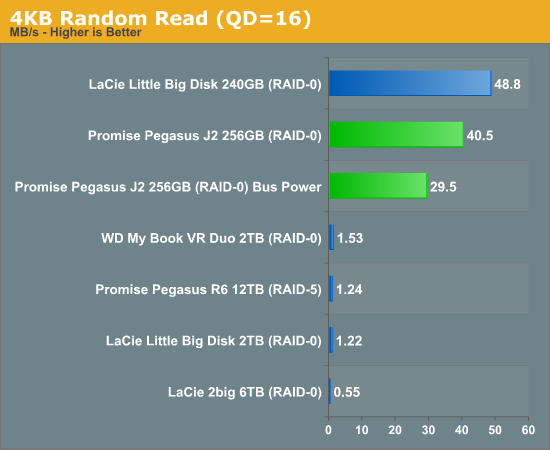
Random read performance is pretty good on the J2, although LaCie's SSD based Little Big Disk manages better performance thanks to its use of Intel SSD 320s. There's no competition from the hard drive based enclosures.
The real problem is random write performance:
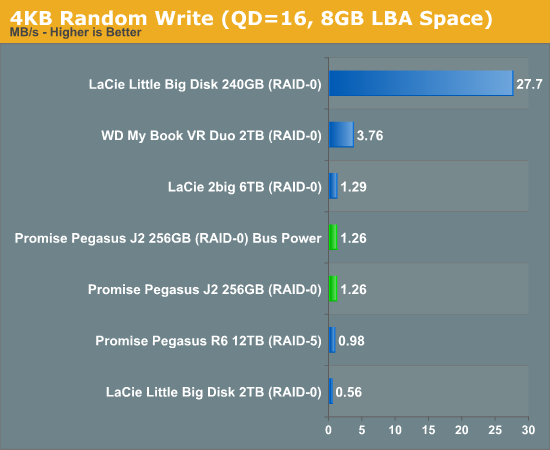
I actually had to stop the random write test early because performance got too erratic. Under heavy random writes the Phison controllers easily drop into the 200 - 400KB/s range. It's bad. The other problem is if you're writing anything but sequential files to the drive, you'll see a reduction in performance over time. The Phison controllers seem to do an ok job of recovering performance after sequential write passes, which is good given that there's no native TRIM support for the drive under OS X.
TRIM enabler will work on the drive however, and at least pass TRIM through if you format the individual RAID slices. It's unclear to me whether or not Apple's software RAID-0 will pass TRIM through to an array.
Final Words
I really like the uniqueness of the Pegasus J2. Two 6Gbps mSATA drives in a well-built bus powered enclosure that gains additional performance when plugged into the wall is a great way to deliver the best of both worlds. Sequential IO performance, particularly on the read side is amazing. You can get the performance of a 6-drive Pegasus R6 in a fraction of the volume. The chassis is well built and the design is functional.
The big issues with the J2 are its capacity constraints and the Phison controllers used by the integrated SSDs. The former is really a limitation of current NAND die sizes. The best 2-bit MLC NAND shipping today still tops out at 8GB per die, with a maximum of 8 die in a package (64GB per package). It's only really possible to fit 4 NAND packages (256GB) on a standard mSATA board, which limits the J2 to a maximum capacity of 512GB. If that's all the space you need for an external work drive (e.g. as a video project drive for a rMBP or MacBook Air), then you'll be fine, but otherwise it can be an issue.
My other complaint has to do with the use of Phison controllers on the mSATA SSDs. I understand the appeal, but there are simply better options on the market. I'd much rather see something like the Micron C400 mSATA drive integrated into the J2.
The concept behind the J2 is neat and honestly makes a lot of sense. The right way to do this would be to integrate custom form factor SSDs into a tiny Thunderbolt enclosure (e.g. Zenbook Prime/MacBook Air form factor). A larger form factor would allow you to hit 512GB per drive (or more), while sticking with an internal RAID-0 would help take advantage of what Thunderbolt has to offer. You only really need two good 6Gbps SSDs to max out Thunderbolt after all.
Kudos to Promise on breaking the mold with the Pegasus J2, but I'd at least like to see better SSD controllers used inside.

